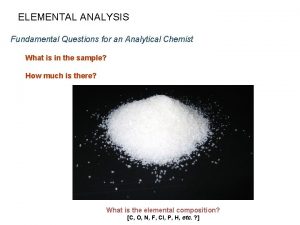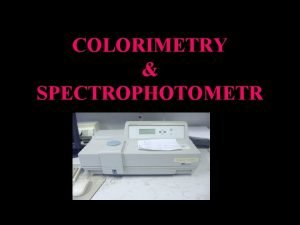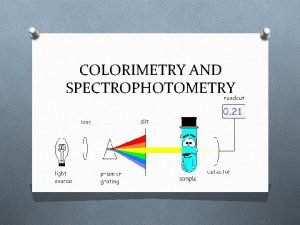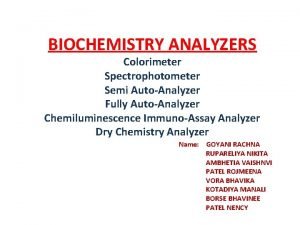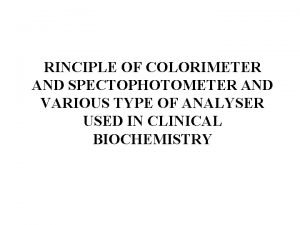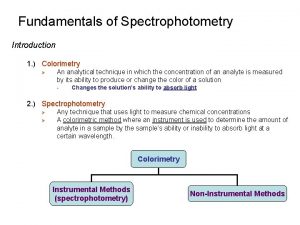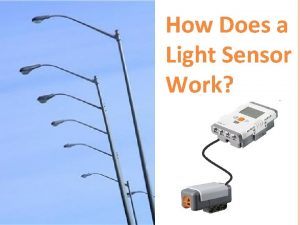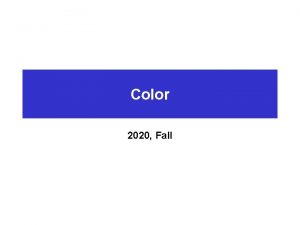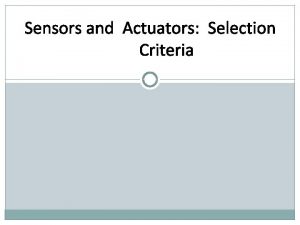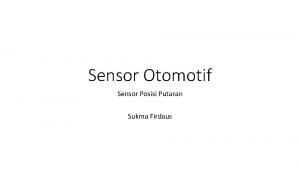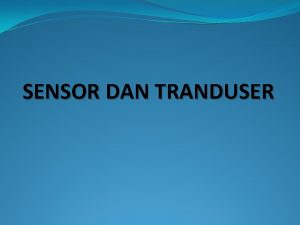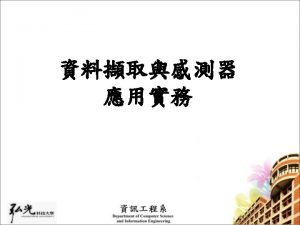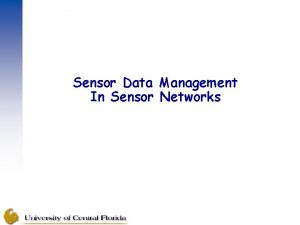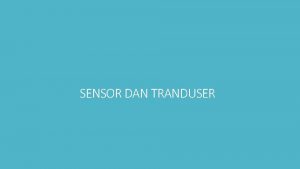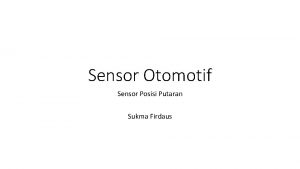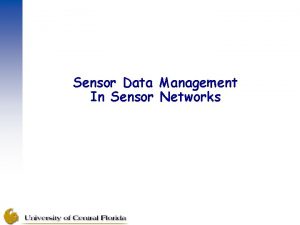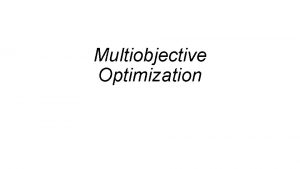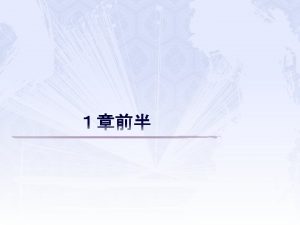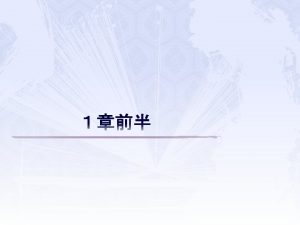Optimization of Sensor Response Functions for Colorimetry of




















- Slides: 20

Optimization of Sensor Response Functions for Colorimetry of Reflective and Emissive Objects Mark Wolski*, Charles A. Bouman, Jan P. Allebach Purdue University, School of Electrical and Computer Engineering, West Lafayette, IN 47907 Eric Walowit Color Savvy Systems Inc. , Springboro, OH 45066 *now with General Motors Research and Development Center, Warren, MI 48090 -9055. Purdue University

Overall Goal Design components (color filters) for an inexpensive device to perform colorimetric measurements from surfaces of different types Purdue University

Device Operation Highlights Output: XYZ tristimulus values 3 modes of operation Emissive Reflective/EE EE n Reflective/D 65 n Purdue University n

Computation of Tristimulus Values Stimulus Vector – n n 31 samples taken at 10 nm intervals 400 Emissive Mode Reflective Mode l Purdue University 700

Tristimulus Vector Tristimulus vector Color matching matrix – Am (3 x 31) Effective stimulus Purdue University

Color Matching Matrix z 3 x 31 matrix of color matching functions x y l Purdue University

Device Architecture Detectors LED’s Filters Purdue University

Computational Model Tm Purdue University

Estimate of Tristimulus Vector Estimate Channel matrix emissive mode reflective modes Purdue University

Error Metric Tristimulus error CIE uniform color space Purdue University

Error Metric (cont. ) Linearize about nominal tristimulus value t = t 0 Linearized error norm Purdue University

Error Metric (cont. ) Consider ensemble of 752 real stimuli nk Rearrange and sum over k Purdue University

Regularization Filter feasbility Roughness cost Design robustness Effect of noise and/or component variations Augment error metric Purdue University

Design Problem Overall cost function Solution procedure For any fixed F = [f 1, f 2, f 3, f 4]T determine optimal coefficient matrices TEM, TEE, and TD 65 as solution to least-squares problem Minimize partially optimized cost via gradient search Purdue University

Experimental Results Optimal filter set for Kr = 0. 1 and Ks = 1. 0 Purdue University

Experimental Results (cont. ) Effect of system tolerance W on meansquared error Purdue University

Experimental Results (cont. ) Error performance in true L*a*b* for set of 752 spectral samples Purdue University

Experimental Results (cont. ) Emissive mode L*a*b* error surface Purdue University

Approximation of Color Matching Matrix Purdue University

Conclusions For given device architecture, it is possible to design components that will yield satisfactory performance filters are quite smooth device is robust to noise excellent overall accuracy Solution method is quite flexible independent of size of sample ensemble Vector space methods provide a powerful tool for solving problems in color imaging Purdue University
 Colorimetry
Colorimetry Colorimetry
Colorimetry Spectrophotometr
Spectrophotometr Colorimetry colour wheel
Colorimetry colour wheel Principle of dry chemistry analyzer
Principle of dry chemistry analyzer Spectophotometer
Spectophotometer Introduction to colorimetry
Introduction to colorimetry How does light sensor work
How does light sensor work Natural response and forced response
Natural response and forced response Natural response circuit
Natural response circuit Primary immune response and secondary immune response
Primary immune response and secondary immune response Iso 22301 utbildning
Iso 22301 utbildning Typiska drag för en novell
Typiska drag för en novell Tack för att ni lyssnade bild
Tack för att ni lyssnade bild Vad står k.r.å.k.a.n för
Vad står k.r.å.k.a.n för Shingelfrisyren
Shingelfrisyren En lathund för arbete med kontinuitetshantering
En lathund för arbete med kontinuitetshantering Personalliggare bygg undantag
Personalliggare bygg undantag Personlig tidbok fylla i
Personlig tidbok fylla i Anatomi organ reproduksi
Anatomi organ reproduksi Förklara densitet för barn
Förklara densitet för barn
